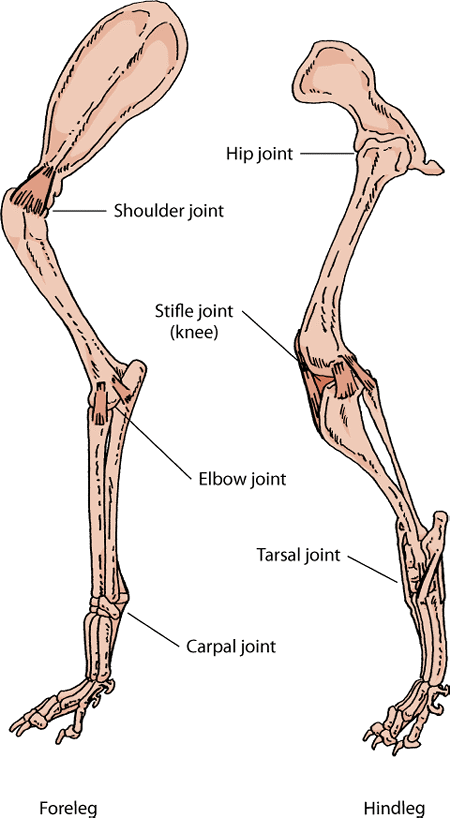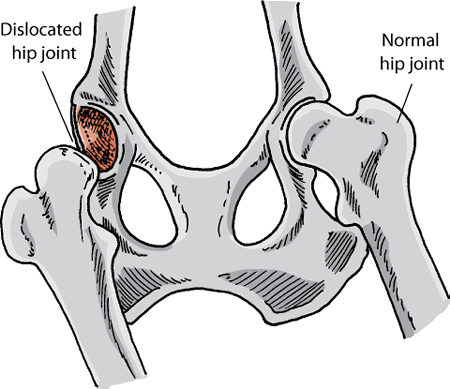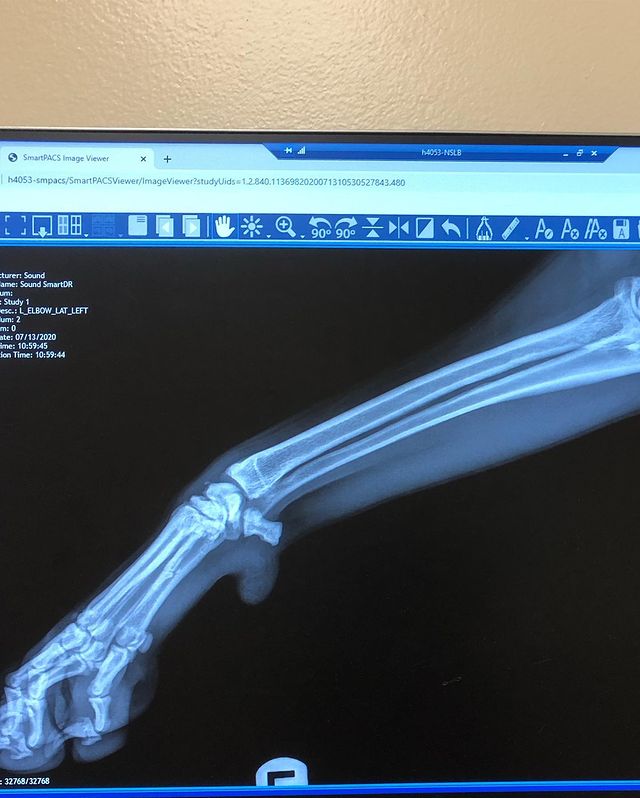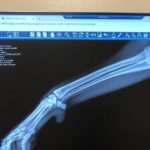
Dog joint problems can be caused by a variety of factors. There may be hereditary issues that have suddenly become symptomatic, an injury, abnormal joint development, or even an immune-related condition. Long-standing inflammation, infection, and trauma can all cause your dog to feel joint pain.
Dog joint problems can affect not only the membranes of the joints, but related ligaments, cartilage, bursae, joint fluid, and bone. When ligaments are affected, they tend to heal slowly, and sometimes not completely, as ligaments don’t have a good blood supply.

Joint problems can persist for either a short or long time, depending on the cause. Short-term dog joint problems related to dislocation, fracture, and joint distortion. Long-term issues are caused by arthritis, rupture of ligaments that are close by, or rupture of the joint membranes themselves.
The effect of a joint problem can be pervasive. Joint injuries change the amount of fluid inside the joint, as well as what it’s made of. This can impact the pressure applied to bones that connect to it. Another effect of a joint injury is that the white blood cell count in a joint is increased, which can, over time, break down cartilage.
One procedure commonly used in dog joint problems is arthroscopy. This is a minor surgery used to diagnose or treat lameness in dogs with joint problems. An endoscope, which is a flexible tube, is inserted in the joint through a small cut. When a vet is using this as a diagnostic procedure, a very small camera is attached to the end of the endoscope, allowing the inside of the joint to be examined. Vets also use this minor procedure to remove any dead or damaged cartilage or ligaments. Typically, arthroscopy is used for the following conditions: osteochondrosis, tenosynovitis, joint fractures, and injuries to cartilage and ligaments.
We’ve already covered some joint and musculoskeletal problems that can cause joint pain in dogs in this article. Below, we’ll discuss these dog joint problems – elbow dysplasia, osteochondrosis, Osteogenesis Imperfecta, and wandering lameness.
Elbow Dysplasia
Like hip dysplasia, elbow dysplasia affects young, rapidly growing puppies. The elbow joint develops abnormally, with atypical bone and cartilage development, and stress on the joints. It is a leading cause of osteoarthritis of a dog’s elbow.
Lameness from elbow dysplasia can appear slowly between the ages of 4 and 8 months, although sometimes a dog isn’t diagnosed until he’s more than a year old. Symptoms include stiffness in the joint, and an inability to move properly. When the disease is more advanced, there will be a buildup of fluid in the joint, a grating or crackling sound, and symptoms of osteoarthritis.
Elbow dysplasia can affect both elbows.
Hip Dysplasia

Click for the article on canine hip dysplasia
Osteochondrosis
This is a condition that tends to affect larger breed dogs when they are quite young and relates to their bone formation. At that stage of fast growth, when the stress on their still-growing skeleton is most significant, their undeveloped joint cartilage may separate from their bone. This cartilage then floats loosely in the joint, causing inflammation, and interfering with proper bone formation.
The condition can lead to arthritis, and the cartilage in the joint can continue to break down. Symptoms include:
- lameness
- a buildup of fluid within the joint
- stiffness in the joint
Osteochondrosis tends to affect the shoulder joints the most, elbow joints being the most common after that, and less typically, the ankle joints.
Osteogenesis Imperfecta
Dogs with this genetic condition have very fragile bones and loose joints. Their long bones tend to be slim, with thin outer layers, and they break easily. In humans, it is called ‘Brittle bone disease’. A telltale sign is when the whites of the eyes have a bluish tinge.
Wandering Lameness (Panosteitis)
Panosteitis is another disease affecting large breed, rapidly growing puppies. It is believed to be a genetic disease, though the cause is not known. Panosteitis is called wandering lameness because one of the symptoms is the shifting of pain and lameness from one limb to another. This will occur where there has been no trauma to the dog. When you put pressure on the shaft of the bone of an affected leg, there will be a pain.
Fortunately, this is a condition that will heal itself over time, though it’s important to make sure your puppy is not suffering from osteochondrosis, elbow, or hip dysplasia, which can cause similar symptoms.
Arthritis
Arthritis is a condition that affects the joint membranes themselves. There are a number of arthritic conditions that can affect dogs. These include osteoarthritis, septic arthritis, immune-mediated arthritis, and cancerous arthritis. It can appear as the primary condition, or secondary to other conditions such as hip or elbow dysplasia. We cover these conditions in this series of articles on arthritis in dogs.
References:
- Merck & Merial Manual For Pet Health, Home Edition
- Griffin & Carlson, Dog Owner’s Home Veterinary Handbook




